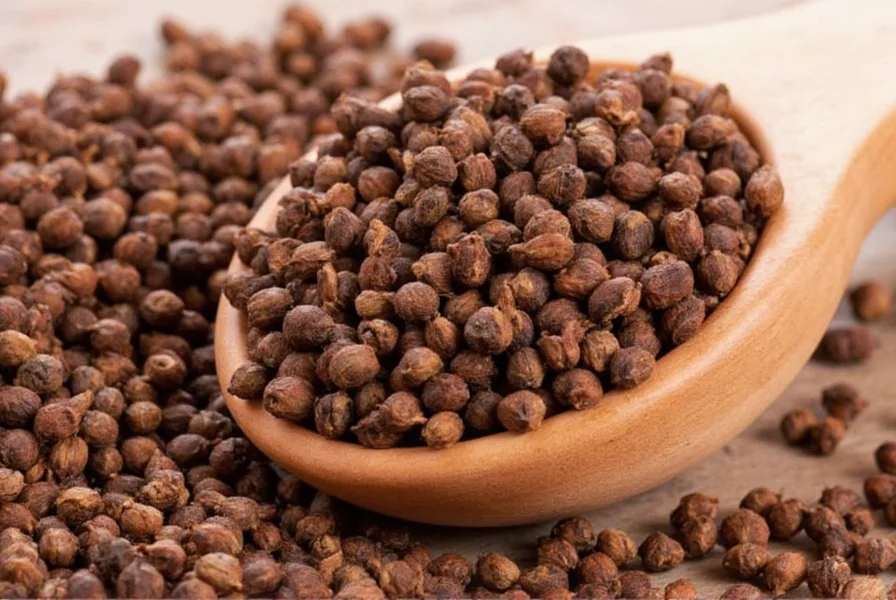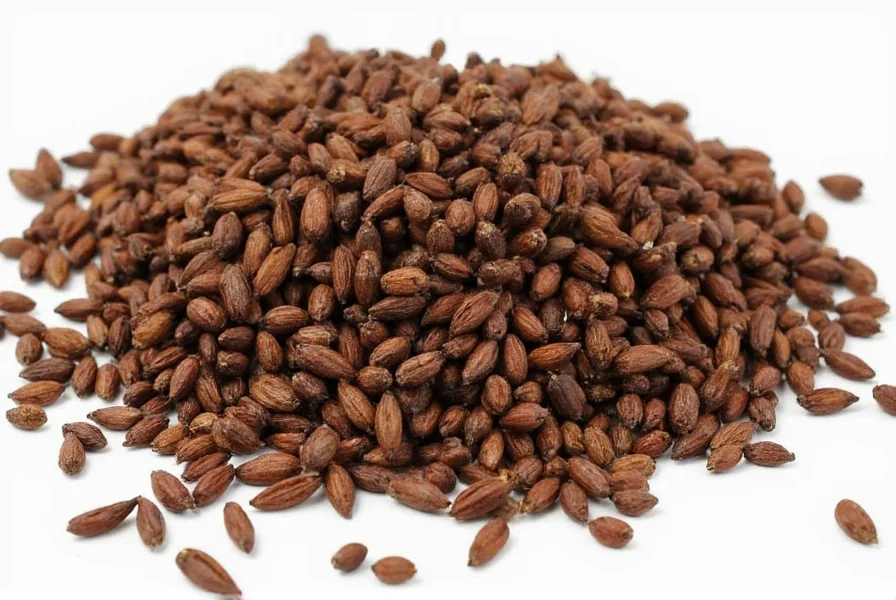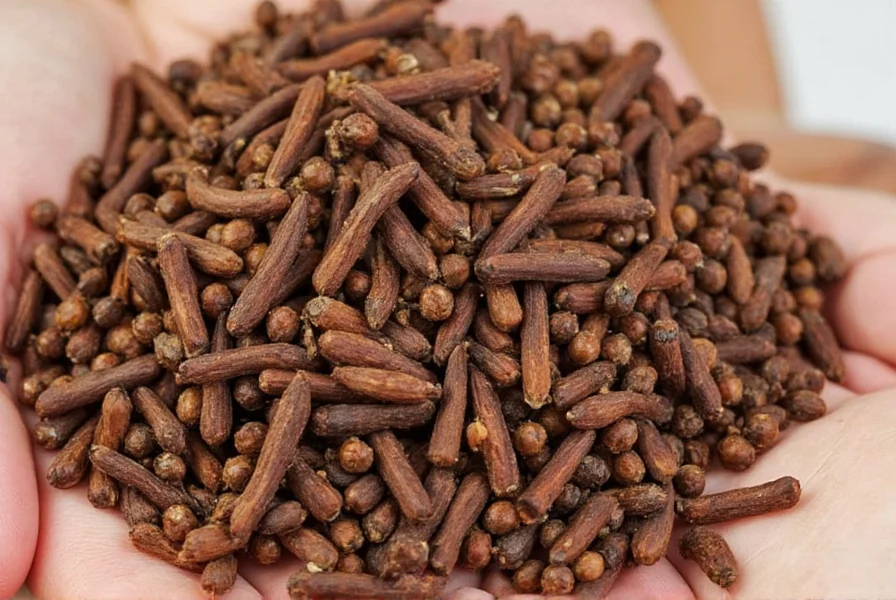Cloves represent one of the world's oldest and most prized spices, with a history spanning thousands of years. These small but powerful botanical wonders deliver intense flavor and fragrance from their compact structure. Understanding what are cloves requires examining both their physical properties and their remarkable journey from tropical tree buds to kitchen staple.
Botanical Identity and Natural Habitat
The clove tree (Syzygium aromaticum) belongs to the Myrtaceae family, which also includes eucalyptus and guava. Native to the Maluku Islands (historically called the Spice Islands) in Indonesia, these tropical evergreen trees thrive in warm, humid climates with rich volcanic soil. Mature clove trees can reach 8-12 meters in height and begin producing flower buds after 6-7 years of growth.
What are cloves botanically? They're the unopened flower buds of the clove tree, harvested when still immature and pinkish in color. The harvesting process occurs in two stages each year, typically between April and June and again between August and November, when the buds reach optimal size but haven't yet bloomed.

Physical Characteristics of Cloves
Whole cloves measure approximately 1-2 centimeters in length with a distinctive nail-like appearance that inspired their name (from the Latin clavus, meaning nail). Each clove consists of:
- Calyx - The base that attaches to the stem
- Stem - The long, thin portion
- Head - The rounded, four-lobed flower bud containing the essential oils
When dried, cloves turn from pink to a rich reddish-brown color. Their most distinctive feature is their potent aroma, primarily from eugenol (comprising 70-90% of their essential oil content), which creates that characteristic warm, spicy scent familiar in kitchens worldwide.
Historical Journey of Cloves
What are cloves historically significant for? Their story begins in ancient Indonesia, where they've been used for over 2,000 years. Archaeological evidence shows cloves reached the Middle East by the 3rd century BCE, carried along early spice trade routes. Chinese historical records from the Han Dynasty (206 BCE–220 CE) mention cloves as a breath freshener used by those addressing the emperor.
During the Middle Ages, cloves became so valuable in Europe that they were worth more than their weight in gold. The Dutch controlled the clove trade in the 17th century with such strict monopoly that they destroyed clove trees on all but a few islands to maintain scarcity and high prices. This historical context explains why understanding what are cloves involves appreciating their profound economic and cultural impact throughout human history.
Culinary Applications of Cloves
What are cloves used for in cooking? Their intense flavor makes them a versatile spice across global cuisines:
| Cuisine Type | Common Clove Applications | Flavor Contribution |
|---|---|---|
| Indian | Garam masala, biryani, chai tea | Warm base note in complex spice blends |
| Middle Eastern | Rice dishes, meat marinades, stews | Depth and complexity in savory dishes |
| European | Ham glazes, mulled wine, pickling spices | Sharp, warming element in holiday recipes |
| Chinese | Five-spice powder, braised dishes | Essential component of balanced spice profiles |
Chefs use cloves in two primary forms: whole and ground. Whole cloves provide gradual flavor release and are often removed before serving, while ground cloves offer immediate, more intense flavor. When working with what are cloves in recipes, remember that a little goes a long way—their potency means overuse can easily dominate other flavors.
Nutritional Profile and Traditional Uses
What are cloves nutritionally? A single teaspoon (2 grams) of ground cloves contains:
- Approximately 12 calories
- Significant manganese (55% of daily value)
- Moderate dietary fiber
- Antioxidants including eugenol and flavonoids
- Small amounts of vitamin K, calcium, and magnesium
Traditional medicine systems worldwide have incorporated cloves for centuries. What are cloves good for according to historical practices? They've been used as:
- Dental pain relief (due to eugenol's numbing properties)
- Digestive aid for bloating and nausea
- Natural preservative due to antimicrobial properties
- Respiratory support in traditional remedies
Modern research continues to investigate these traditional applications, though it's important to note that cloves should complement—not replace—professional medical care for health conditions.
Selecting and Storing Quality Cloves
What are cloves like when fresh? High-quality whole cloves show these characteristics:
- Rich, dark brown color (not pale or yellowish)
- Intact, unbroken heads with visible oil glands
- Strong, penetrating aroma when crushed
- Oil visible when pressed (a sign of freshness)
For optimal storage, keep cloves in an airtight container away from light and heat. Whole cloves maintain their potency for 1-2 years, while ground cloves lose flavor more quickly—typically within 6 months. What are cloves worth preserving properly? Their flavor compounds degrade when exposed to air, moisture, and light, diminishing their culinary impact.

Culinary Substitutions and Pairings
What are cloves compatible with in recipes? They pair exceptionally well with:
- Cinnamon and nutmeg (classic holiday spice combinations)
- Allspice (which actually contains clove-like notes)
- Star anise and cardamom in complex spice blends
- Orange and other citrus flavors
- Rich meats like pork, beef, and game
If you're wondering what are cloves substitutes when unavailable, consider:
- Allspice (use 3/4 teaspoon allspice for 1 teaspoon cloves)
- Nutmeg (use sparingly as it's less potent)
- Cinnamon (for sweetness but lacks the pungency)
- Pumpkin pie spice (contains cloves plus other complementary spices)
Remember that substitutions won't perfectly replicate what are cloves unique flavor profile, but they can provide acceptable alternatives in a pinch.
Interesting Clove Facts
What are cloves surprising for beyond cooking? Consider these lesser-known aspects:
- Cloves were used as a form of currency in ancient Java
- The word "clove" comes from the Latin "clavus" meaning nail
- Clove trees can produce for up to 80 years
- Indonesia still produces about 80% of the world's cloves
- Cloves contain one of the highest antioxidant levels among spices
Frequently Asked Questions
What are cloves exactly?
Cloves are the dried, unopened flower buds of the Syzygium aromaticum tree, an evergreen native to Indonesia's Maluku Islands. These small, nail-shaped spices contain high concentrations of eugenol, which gives them their distinctive warm, pungent flavor and aroma.
What are cloves used for in cooking?
Cloves are used globally in cooking for their warm, spicy flavor. They feature prominently in Indian garam masala, Middle Eastern rice dishes, European ham glazes and mulled wines, and Chinese five-spice powder. Whole cloves provide gradual flavor release in braises and stews, while ground cloves work well in baked goods and spice blends.
What are cloves good for health-wise?
Cloves contain eugenol, which has natural analgesic properties historically used for toothache relief. They're rich in antioxidants and manganese, and traditional medicine systems have used them for digestive support and as a natural preservative due to antimicrobial properties. However, cloves should complement—not replace—professional medical care.
What are the differences between whole and ground cloves?
Whole cloves maintain their flavor longer (1-2 years) and provide gradual flavor release in cooking, often removed before serving. Ground cloves lose potency faster (6 months) but distribute flavor immediately. Whole cloves are better for infusions and pickling, while ground cloves work better in baked goods and spice rubs where even distribution is important.
What are cloves called in different languages?
Cloves have various names worldwide: 'laung' in Hindi, 'ding xiang' (nail fragrance) in Chinese, 'cengkeh' in Indonesian, 'clous de girofle' in French, and 'kruidnagel' (spice nail) in Dutch. The English name comes from the Latin 'clavus' meaning nail, referring to their shape.











 浙公网安备
33010002000092号
浙公网安备
33010002000092号 浙B2-20120091-4
浙B2-20120091-4